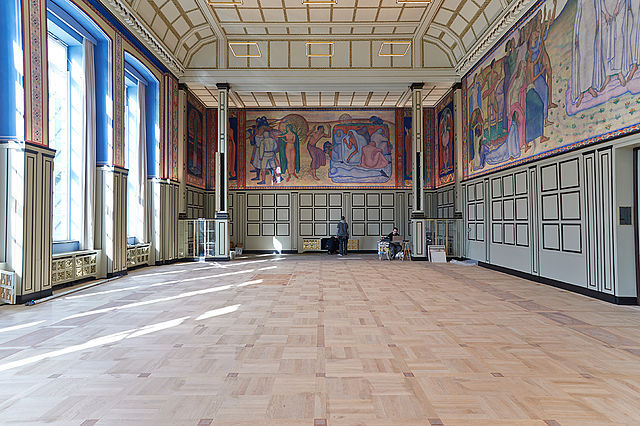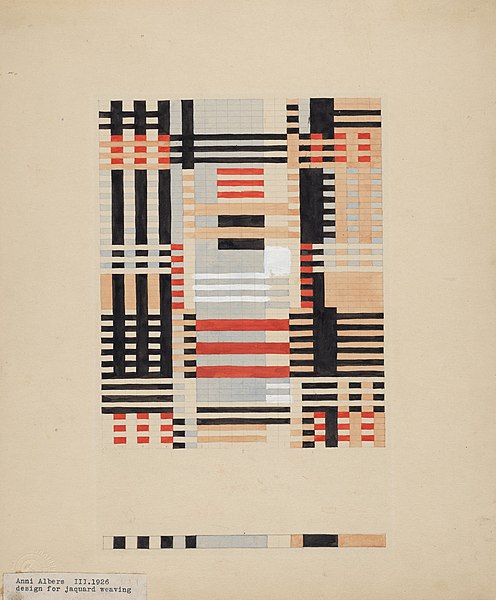A Kunstgewerbeschule was a type of vocational arts school that existed in German-speaking countries from the mid-19th century. The term Werkkunstschule was also used for these schools. From the 1920s and after World War II, most of them either merged into universities or closed, although some continued until the 1970s.
Kunstgewerbeschule Magdeburg building
Auditorium of the former Kunstgewerbeschule Hamburg, with the mural de:Die ewige Welle by de:Willy von Beckerath, created 1911-1918, restored 2011.
Building of the former Kunstgewerbeschule Vienna, now the University of Applied Arts Vienna.
Entrance to the former Kunstgewerbeschule Erfurt, now the Art and Music building of the Education Faculty, University of Erfurt
Anni Albers was a German-Jewish visual artist and printmaker. A leading textile artist of the 20th century, she is credited with blurring the lines between traditional craft and art. Born in Berlin in 1899, Fleischmann initially studied under impressionist painter Martin Brandenburg from 1916 to 1919 and briefly attended the Kunstgewerbeschule in Hamburg in 1919. She later enrolled at the Bauhaus, an avant-garde art and architecture school founded by Walter Gropius in Weimar in 1922, where she began exploring weaving after facing restrictions in other disciplines due to gender biases at the institution.
Anni Albers
Design for Wall Hanging, 1925 (Harvard Art Museums)
Design for a Silk Tapestry, 1926 (Harvard Art Museums)
Design for a Jacquard Weaving, 1926 (Harvard Art Museums)








